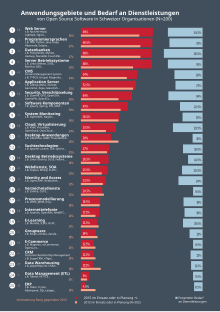Economics

Some economists agree that open-source is an information good or "knowledge good" with original work involving a significant amount of time, money, and effort. The cost of reproducing the work is low enough that additional users may be added at zero or near zero cost – this is referred to as the marginal cost of a product. Copyright creates a monopoly so the price charged to consumers can be significantly higher than the marginal cost of production. This allows the author to recoup the cost of making the original work. Copyright thus creates access costs for consumers who value the work more than the marginal cost but less than the initial production cost. Access costs also pose problems for authors who wish to create a derivative work—such as a copy of a software program modified to fix a bug or add a feature, or a remix of a song—but are unable or unwilling to pay the copyright holder for the right to do so.
Being organized as effectively a "consumers' cooperative", open source eliminates some of the access costs of consumers and creators of derivative works by reducing the restrictions of copyright. Basic economic theory predicts that lower costs would lead to higher consumption and also more frequent creation of derivative works. Organizations such as Creative Commons host websites where individuals can file for alternative "licenses", or levels of restriction, for their works. These self-made protections free the general society of the costs of policing copyright infringement.
Others argue that since consumers do not pay for their copies, creators are unable to recoup the initial cost of production and thus have little economic incentive to create in the first place. By this argument, consumers would lose out because some of the goods they would otherwise purchase would not be available. In practice, content producers can choose whether to adopt a proprietary license and charge for copies, or an open license. Some goods which require large amounts of professional research and development, such as the pharmaceutical industry (which depends largely on patents, not copyright for intellectual property protection) are almost exclusively proprietary, although increasingly sophisticated technologies are being developed on open-source principles.
There is evidence that open-source development creates enormous value. For example, in the context of open-source hardware design, digital designs are shared for free and anyone with access to digital manufacturing technologies (e.g. RepRap 3D printers) can replicate the product for the cost of materials. The original sharer may receive feedback and potentially improvements on the original design from the peer production community.
Many open source projects have a high economic value. According to the Battery Open Source Software Index (BOSS), the ten economically most important open source projects are:
| Ranking | Project | Leading company | Market Value |
|---|---|---|---|
| 1 | Linux | Red Hat | $16 billion |
| 2 | Git | GitHub | $2 billion |
| 3 | MySQL | Oracle | $1.87 billion |
| 4 | Node.js | NodeSource | ? |
| 5 | Docker | Docker | $1 billion |
| 6 | Hadoop | Cloudera | $3 billion |
| 7 | Elasticsearch | Elastic | $700 million |
| 8 | Spark | Databricks | $513 million |
| 9 | MongoDB | MongoDB | $1.57 billion |
| 10 | Selenium | Sauce Labs | $470 million |
The rank given is based on the activity regarding projects in online discussions, on GitHub, on search activity in search engines and on the influence on the labour market.
Licensing alternativesedit
Alternative arrangements have also been shown to result in good creation outside of the proprietary license model. Examples include:citation needed
- Creation for its own sake – For example, Wikipedia editors add content for recreation. Artists have a drive to create. Both communities benefit from free starting material.
 Wikipedia is an example of a global application of the open source model.
Wikipedia is an example of a global application of the open source model. - Voluntary after-the-fact donations – used by shareware, street performers, and public broadcasting in the United States.citation needed
- Patron – For example, open access publishing relies on institutional and government funding of research faculty, who also have a professional incentive to publish for reputation and career advancement. Works of the U.S. federal government are automatically released into the public domain.citation needed
- Freemium – Give away a limited version for free and charge for a premium version (potentially using a dual license).
- Give away the product and charge something related – Charge for support of open-source enterprise software, give away music but charge for concert admission.citation needed
- Give away work in order to gain market share – Used by artists, in corporate software to spoil a dominant competitor (for example in the browser wars and the Android operating system).citation needed
- For own use – Businesses or individual software developers often create software to solve a problem, bearing the full cost of initial creation. They will then open source the solution, and benefit from the improvements others make for their own needs. Communalizing the maintenance burden distributes the cost across more users; free riders can also benefit without undermining the creation process.

Comments
Post a Comment